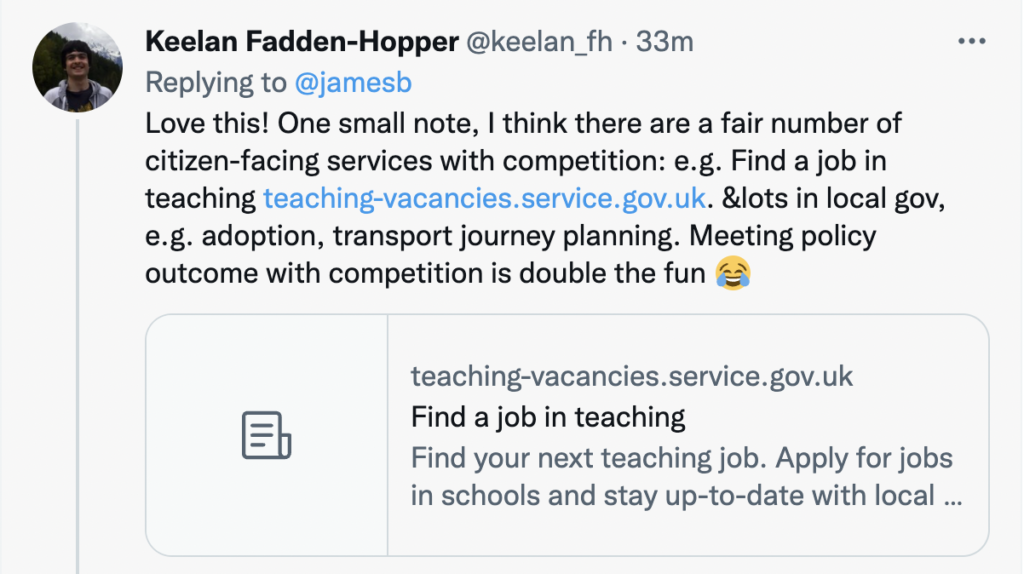
So, I’m currently working on the Probation Reform Programme a huge piece of work to transform the way in which we manage people on probation and ultimately try and rehabilitate them so they don’t re-offend.
In the first year I was working as a contractor doing user research, and in the last two years I’ve worked as a Service Owner. The role, as I’ve interpreted it, has been a mix of product leadership and service management (procurement and contract management, and getting the infrastructure in place for teams to deliver value). There are a bunch of learnings I want to share about this last few years, and the first is about prioritising.
In the commercial sector priorities for determining product decisions are driven by the requirement to make a surplus. Even the unicorns (in fact especially the unicorns!) funded by VC have the goal, ultimately, of returning a healthy return on the investment they receive. Determining the product -market fit and the value to customers is hard, but clear. Will enough people pay to hire your product or service over another? This is how you determine the value your product has. All subsequent product prioritisation decisions then stem from this – segmenting your customer base, growing market share, creating a defensible competitive advantage etc. to extend and drive that value higher, and into the future. Frameworks like RICE help product managers figure this out, and user needs and data on usage and behaviour give you a steer as to the right direction to test and iterate.
Building products in government ought to be simpler; there are very few competitors for your audience and you usually have a monopoly*.
Yet, because there is no clear way to determine value because your users rarely have a choice but to use your service, product decisions are complicated.
Here are three things that have helped me to determine how to prioritise work at MoJ.
- Focus on the thing that meets the policy intent / or desired outcome most cost effectively. In the probation programme the ultimate goal is to reduce re-offending. In the area of Interventions, one of the decisions I made early on was that unpaid work (sometimes known as community payback) was not going to help in achieving that outcome as much as a rehabilitative intervention such as an accredited programme. That value decision seemed very clear to me, despite unpaid work having a huge backlog of projects that needed managing, reducing that backlog wouldn’t have helped achieve the outcome. It’s not always as clear as this example, but developing hypotheses to test should provide confidence in which direction to take.
- Go to where there’s clarity and agreement on policy. One early discovery we did was around resettlement. When people leave prison the first 48 hours are vital to get them on the right path. We *knew* this from existing research and we felt that digital ought to focus on this problem. However, the policy about how to support people leaving prison was in its infancy, and there was a lot of uncertainty about the direction of policy. So despite knowing it was a key area, we stopped the work at end of the discovery period because we knew that the policy wouldn’t be able to support decisions the digital team would need to make: it was too soon. Whereas on the first project I was involved in – delivering value to court – we chose to focus on an area the organisation wasn’t that interested in – admin! Admin tasks rarely make it into a target operating model, or policy guidelines, and this means it’s often easier to deliver work quickly and effectively into the hands of users and show the business what digital can do. Having proven the value of digital and won trust of stakeholders, that team was able to make greater inroads into areas of court that were the preserve of policy.
- Ensure the digital levers at your disposal are powerful enough to make a difference. Software has the potential to change behaviour radically, and we see this in everyday services we now use to travel, book events and connect with other people. Yet sometimes software can’t effect the change needed to make the cost of building a digital service worthwhile. For example, in managing unpaid work the cost of providing devices for supervisors to use in the field (to manage attendance records etc) is significant. A tablet or smartphone is also open to be stolen, or broken, and wifi and data signals can be patchy. Paper is robust and reliable in this situation! Similarly, the resettlement team (above) found in their discovery that the ability to impact significantly on the lives of people leaving prison meant getting buy-in from those managing benefits journeys (DWP) and also commercial contracts with accommodation providers. Any effect they could have was dependent on others (departments, agencies) and whilst that that in itself didn’t prevent the team progressing, it was a significant factor in deciding not to prioritise the work into Alpha.
* some platforms provided by government have competitors – Notify, for example, but citizen facing services are (all?) monopolies.
Update: As Keelan points out there are GOV services vying with commercial services to meet users’ needs:
